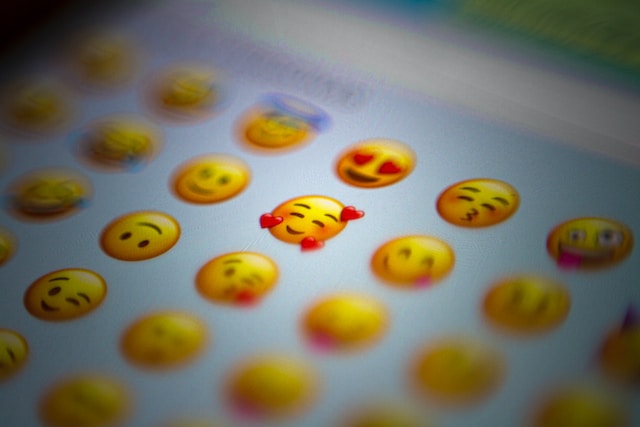In today’s digital age, messaging has become an essential part of our lives. From sending a quick message to a friend to communicating with colleagues and clients, we rely heavily on instant messaging apps. And what adds more fun and emotion to these conversations? Emojis!
These small icons have revolutionized the way we communicate online. They not only add color but also convey emotions that might be hard to express in words alone. In this KalamTime blog post, we’ll explore the role of emojis in instant messaging and why they matter more than ever before!
What are emojis?
Emojis are small digital icons that represent emotions, feelings, objects, and actions. They were first created in Japan in the late 1990s and have since become a global phenomenon. Today, there are thousands of different emojis available on various platforms.
One unique aspect of emojis is their ability to convey complex emotions with just one icon. For example, instead of typing out “I’m feeling happy today,” you could simply use the smiling face emoji. This simplicity and ease of use have made emojis incredibly popular amongst people of all ages.
Another interesting fact about emojis is how they’ve evolved over time to become more inclusive and diverse. In recent years, there’s been a push for more representation of different cultures, genders, and sexual orientations within the world of emojis.
Emojis have changed the way we communicate online by adding an extra layer of emotion and expression to our conversations.
How do emojis affect communication?
Emojis are a vital part of modern communication, especially in instant messaging. They have become an essential tool for expressing emotions and conveying messages more clearly than words alone ever could.
One way emojis affect communication is by providing context to the tone and intent behind a message. Text-based conversations can often be misinterpreted without the aid of visual cues like facial expressions or body language. Emojis bridge this gap by offering quick and easy ways to convey feelings.
Moreover, they make conversations more fun and engaging. People love using emojis because they add personality to their messages, making them feel less robotic and more authentic. This helps build stronger connections between people through online interactions.
However, it’s important to use emojis effectively – not too many or too few – as overuse can come across as unprofessional or childish, depending on the situation at hand.
In summary, emojis enhance communication in various ways, such as adding emotional context while maintaining professionalism when used appropriately.
The different types of emojis
Emojis come in different shapes, sizes, and colors. Each of them conveys a specific meaning or emotion. There are hundreds of emojis available for use on most messaging platforms. Some commonly used emojis include facial expressions, animals, food items, objects, and symbols.
Facial expression emojis are the most popular type of emoji as they enable users to convey their mood without having to type long messages. These include smileys with various expressions like happy ?, sad ? or winking ? faces.
Animal emojis can be used to represent pets such as cats ? or dogs ? or even wild animals like snakes ? and lions ?. Food item emojis range from fruits? to fast foods? while object emojis encompass everyday things such as watches ⌚️and cars?.
Symbol Emojis express emotions related to events like birthdays? and holidays? while also representing abstract concepts such as love? or money?.
To use emojis effectively in instant messaging communication, one needs to know what each emoji represents so that they don’t accidentally send an inappropriate message due to misunderstanding the meanings behind some less common ones.
How to use emojis effectively
The use of emojis has become increasingly important in today’s instant messaging culture. However, it is essential to learn how to use them effectively to convey the right message and avoid any confusion or misinterpretation.
Firstly, consider who you are communicating with and their age group. Younger generations may be more accustomed to using a wide range of emojis, while older individuals may not understand their meaning as well. Therefore, choose your emojis according to your audience.
Secondly, pay attention to context. Emojis can have different meanings depending on the situation they are used in. For instance, a heart emoji could represent love or friendship based on context.
Thirdly, don’t overuse emojis! Using too many can make your message difficult to read or even come across as unprofessional. Use just enough for emphasis and clarity purposes only.
Last but most importantly, always ensure that the chosen emoji accurately represents what you want to communicate. If unsure about an emoji’s meaning or usage – do some research!
In conclusion, effective use of emojis requires careful consideration of context and audience preference whilst also ensuring accuracy in representation.
Conclusion
To sum up, emojis are an essential part of our daily conversations in the digital age. They provide a more expressive and nuanced way of communicating emotions and ideas through instant messaging. With their growing popularity, it’s important to understand how to use them effectively so that they enhance rather than hinder communication.
By using appropriate emojis at the right time, you can add a personal touch to your messages while also avoiding misinterpretations or misunderstandings. Emojis bring fun and creativity to online conversations while bridging cultural gaps and language barriers.
So next time you’re chatting with friends or colleagues online, don’t be afraid to use emojis! Just remember to choose wisely based on the context and audience. Happy messaging!

